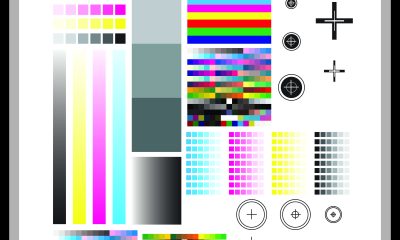There’s an ongoing debate amongst the Wall Street elites regarding the future of manufacturing. Will it be full-on robotics with nary a human in sight, or buck-a-day overseas labor? Those of us who still walk factory floors at places like Ye Olde Grafix Shoppe & T-Shirt Emporium know the truth is somewhere in between those two extremes.
There’s an ongoing debate amongst the Wall Street elites regarding the future of manufacturing. Will it be full-on robotics with nary a human in sight, or buck-a-day overseas labor? Those of us who still walk factory floors at places like Ye Olde Grafix Shoppe & T-Shirt Emporium know the truth is somewhere in between those two extremes.
The present and future of specialty printing in North America is filled with increasingly complex machines printing even more complex designs and products, from textiles to touch screens. Such work doesn’t call for robots or unskilled labor—it requires skilled operators that enable businesses to remain productive, competitive, and profitable.
One problem: Where do specialty-graphics and industrial printers find trained, job-ready workers?
Traditionally, it’s been up to the companies to invent some type of training program, which mostly consists of “Go clean those screens.” The North American industry has no common standards like those for electricians or a host of other occupations, and little connection between recognized trade apprenticeships in specialty printing at the state, provincial, or nationwide level. As some wag once observed, “Screen printing is very easy to do, but extremely difficult to do well.” Learning to print through a wooden frame using a paper stencil is about 100 years behind the technical skills required by someone running a four-color, automated UV line. Unfortunately, except for a few standout programs (Clemson University and Paramount High in California are two that come to mind), screen- and specialty-printing education is mostly stuck in the wooden-frame era.
Advertisement
Over the last decade, we’ve seen a rapid switch to digital processing and automation of almost every component step, but most schools don’t teach the skills required to operate these machines. Today’s production artists must be able to handle files from a variety of sources while understanding how to prep jobs that involve 12 colors on an automatic textile press, or conductive traces and dielectric layers for a complex electronic wafer powering a consumer device. Printers are expected to be able to set up, calibrate, and run jobs that may change two to three times a day using different machines, materials, inks, and curing systems.
The situation has prompted SGIA to re-establish its Education Committee. Johnny Shell, VP of technical services, and Ashley Arneson, associate manager of education, have recruited an impressive group of enthusiastic members who recognize the need. One of the first tasks has been to establish the current skills needed in a modern print shop and outline the different issues confronted by educators who want to bring new programming forward but face shrinking budgets and bureaucratic quicksand.
Arneson feels that in an increasingly competitive global economy, education remains critical to the long-term viability of the specialty-imaging industry. “SGIA has long recognized the important role educational institutions play in providing a skilled workforce to the trade,” she says. “Today, this is as important as ever. SGIA educator members are finding it difficult to maintain pace with the ever-evolving industry — mainly because of significant advances in today’s highly technological equipment, as well as the lack of resources and funds available to graphic-communications programs.”
SGIA’s Education Committee, which was reinstated in 2013, consists of printer, supplier, and educator members. The key focus of this committee is to support and encourage academic graphic-communications programs to join with printers and suppliers to ensure the future success of the specialty-printing community. Steps towards achieving this goal include:
● Updating existing curriculum outlines for exploratory, secondary, and post-secondary students and developing support materials for these three levels of teaching
● Partnering with the Graphic Arts Education and Research Foundation (GAERF) in updating existing competencies in accrediting areas that fall within the scope of SGIA
● Highlighting successful graphic-communication programs within the SGIA educational membership
● Providing the necessary web portals to better connect the SGIA communities with educators.
They will continue to recognize and reward students participating in the Tom Frecska Student Printing Competition, as well as competitions held within partner organizations such as SkillsUSA. Johnny Shell, as the new chairman of the Screen Printing and Graphic Imaging-Sublimation Committees for SkillsUSA, is working to align the new curriculum outlines with the standards for the annual competition. In addition, the committee is supporting educational institutions working to become accredited under PrintED in the area of screen printing through the use of the new curriculum outlines. Arneson says discussion are underway with GAERF to develop a wide-format accreditation as well.
SGIA’s new screen-printing curriculum outlines are expected soon. Wide-format training materials will be available shortly thereafter. Watch for various web portals for educators including employment/internship exchanges and equipment/supply discounts.
Advertisement
Arneson concludes, “Our hopes are to better bridge the gap between our SGIA educator and business members, helping to create a skilled workforce and maintaining the longevity of the industry.”

 Case Studies2 months ago
Case Studies2 months ago
 Art, Ad, or Alchemy2 months ago
Art, Ad, or Alchemy2 months ago
 Andy MacDougall2 months ago
Andy MacDougall2 months ago
 Columns3 weeks ago
Columns3 weeks ago
 Editor's Note2 weeks ago
Editor's Note2 weeks ago
 Marshall Atkinson2 weeks ago
Marshall Atkinson2 weeks ago
 Thomas Trimingham2 months ago
Thomas Trimingham2 months ago
 News & Trends2 months ago
News & Trends2 months ago
















